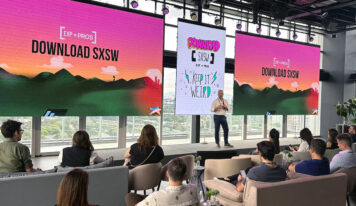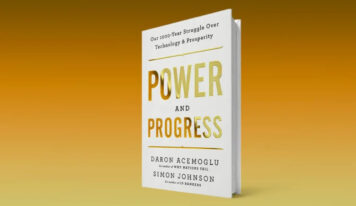The culture and management methods used by Jeff Bezos to transform Amazon from a small online book retailer in the early days of the Internet into a technology giant
Core Ideas:
1 – Jeff Bezos started by listing twenty product categories that had the potential to sell online, such as computer software, office supplies, clothing, and music. After careful contemplation, he decided that the best starting point should be books – with stupendous success.
2 – Bezos in a letter to investors: “We will continue to focus on hiring and retaining versatile and talented employees and will continue to weigh their compensation toward stock options rather than cash. Our success is tied to our power to attract and retain motivated employees.”
3 – Amazon’s secret lies in its first-class AI-generated data and metrics system, the gold standard of the category, where everything that matters can be tracked and analyzed, with insights and automated routine decisions.
4 – Failure and invention are twin brothers. Among Amazon’s eighteen failures, the Fire Phone is undeniably a billion-dollar failure. But from the ashes of the Fire Phone, Amazon took its learning that accelerated the creation of the Echo and Alexa.
5 – At Amazon, team-minded people are not defined as people who agree with the group consensus. Instead, leaders are required to respectfully challenge decisions when they disagree, even if it is uncomfortable.
Authors:
Ram Charan has published 27 books that have sold over 3 million copies around the world. He is a renowned advisor to major CEOs, business unit managers, and boards of directors. He holds an MBA and a Ph.D. from Harvard Business School.
Julia Yang is an advisor to entrepreneurs, founders, CEOs, and executives. Previously, she was a consultant at McKinsey and a private equity investor at Bain Capital. She serves on the faculty of the MIT-Tsinghua joint MBA program.
The Amazon management system is truly revolutionary. It delivers an end-to-end consumer experience that is better, cheaper, faster, and more compelling. It generates continuous invention on behalf of its customers, creates new business, expands the ecosystem, and most importantly, increases gross margin cash flows that enable continued investment in infrastructure and technology innovation. This not only creates tremendous value for customers but also creates the best value in the world for investors.
At the foundation of all Amazon’s endeavors is the management system, a digital engine composed of six fundamentals that has been continuously and relentlessly empowering the company for more growth and more exploration in the never-ending sky of the digital age.
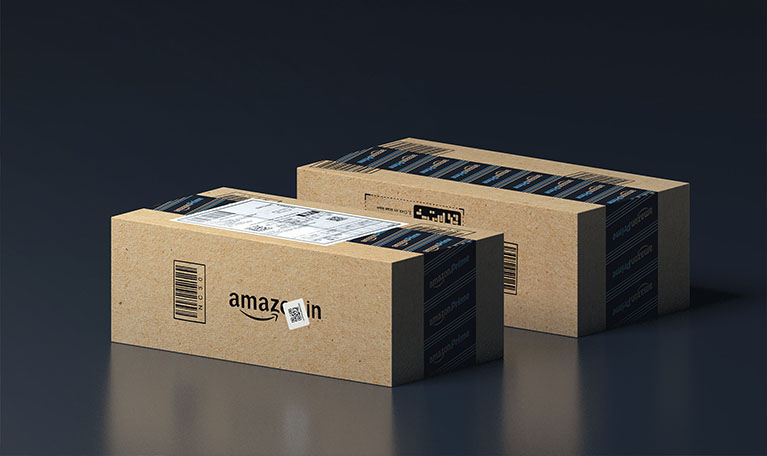
Foundation 1: Customer-obsessed business model
Although extremely excited about the unprecedented growth, Bezos sensibly realized that it was highly impractical to launch the “everything store” from scratch.
So he began by listing twenty product categories that had the potential to sell online, such as computer software, office supplies, clothing, and music. After careful consideration, he decided that the best starting point should be books.
1.0: Online Book Store
Why? At the time, a typical bookstore had a hundred thousand books in stock, just a fraction of the nearly three million titles in print. All physical bookstores were restricted to a practical ceiling of how many books they could hold, while an online bookstore could offer an “unlimited selection”.
This was exactly the crucial differentiator Bezos had been looking for to fuel his game-changing ambition. He understood that the Internet would change customers’ shopping experience in a fundamental way. So what other magic tricks could a newborn internet do?
There were two others more to note. One was customer reviews. Unlike the laudatory reviews from famous figures included in physical books as part of marketing campaigns, reviews on the internet would come from ordinary, direct, authentic, unfiltered readers. The unconstrained space on the Internet meant that all reviews, positive or negative, could be shown in full, as they were posted.
The other is personalization. Bezos had a vision that one day they could reach the ultimate in personalization: a different version of the site for each customer, based on the patterns and preferences derived from their previous purchase records. This would be a whole new customer experience that was only possible on the emerging Internet.
2.0: Online store of everything
Despite Amazon’s burgeoning book business, Bezos never forgot his “everything store” dream. In 1998, he began his first wave of expansion into new categories, such as music, videos, and gifts; and into new geographies, such as the UK and Germany. After that, the company accelerated its expansion into toys, software, video games, and more. That was the core of Bezos’ vision.
Amazon launched Amazon Prime in 2005, a $79 per year membership for up to two days of free delivery. There were over one hundred million prime members worldwide as of December 31, 2018, the second-largest number of paid subscribers, second only to Netflix.
3.0: not store – an online platform
In order for Amazon to truly become a platform, Bezos created the concept of the “no-store,” to again frame the notion of Amazon for those who saw it only as a retailer that had set up store in a digital ZIP code. He repeatedly explained and elaborated on why Amazon was a technology company, not a retailer. He argued that Amazon would not be bound by traditional retail rules and, most importantly, would focus its efforts on how to create long-term relationships based on trust with customers, helping them make the best choices.
This is why after two failed attempts to attract outside sellers (both launched in 1999, Amazon Auctions, abandoned in 2000, and ZShops, abandoned in 2007), Amazon boldly launched Marketplace, an e-commerce platform owned and operated by Amazon that authorized outside sellers to sell new or used products alongside Amazon’s regular offerings. At first, many people were shocked by Amazon’s decision to list search results for items from both direct, first-party, and third-party sellers on the same page, to empower external sellers with all sorts of powerful analytics and management tools, and even sharing with them Amazon’s own customer base, as well as the company’s core competencies like fulfillment.
4.0: Online and offline infrastructure and platform
With the $13.7 billion acquisition of Whole Foods in 2017 and the opening of Amazon Go, Amazon has expanded its empire into fresh produce and offline supermarkets. Why was this particular category so important to Amazon? Because shopping at the market is a high-frequency activity. For some, it might be once a week; or two or three times a week; for others, a daily routine. This scheme of frequent customer interactions is a dream come true for Amazon, a platform that has almost everything for almost everyone.
The most prominent and also surprising aspect of Amazon’s business model is probably its success in the matter of infrastructures, such as Fulfillment By Amazon (FBA, 2006), Amazon Web Services (AWS, 2006), and Alexa (2014). Despite strong competitive pressure from Microsoft, Google, and Alibaba, AWS remains the #1 global cloud service with over 40% of the world’s market share.

Core 2: Continuously raising the bar for talent
It is because of his commitment to excellence in execution that in 1994, before informing his colleagues at D. E. Shaw and Co. of his decision to leave his Wall Street job to start his own company, Bezos made a special trip from New York to California to conduct his first round of interviews with experienced programmers. He lured Shel Kaphan, a veteran of startups who is a technical genius, to be Amazon’s first employee. Since then, he has consistently fed the talent pipeline with individuals who have provided immeasurable value to the company.
Bezos deeply understands the importance of talent. Since 1997, the last, but not least, point within the famous nine-point approach to management and decision making stating in his first Letter to Investors speaks of talent:
“We will continue to focus on hiring and retaining versatile and talented employees, and we will continue to weigh their compensation for stock options rather than cash. We know that our success will be highly affected by our power to attract and retain a motivated employee base, each of whom must think like and therefore actually be an owner.”
Among Amazon’s fourteen leadership principles, right after principle number one, customer obsession comes ownership. Leaders are owners. They think long-term and don’t sacrifice long-term value for short-term results. They act on behalf of the entire company, as well as their own team. They never say: “This is not my job.
While defining the right talent is a central first step, how does Amazon follow through by systematically recruiting people?
The 1999 Wired magazine article written by Chip Bayer revealed an early look at Bezos’ unique and rigorous approach to recruiting:
“He (Bezos) also turned hiring into a Socratic test. ‘Jeff was very, very demanding,’ says Nicholas Lovejoy, who joined Amazon.com as its fifth employee in June 1995. In endless hiring meetings, Bezos, after interviewing the candidate himself, would evaluate each of the interviewers, occasionally creating elaborate charts on a whiteboard detailing the qualifications of each job seeker. If he detected even the slightest doubt, rejection usually ensued. ‘One of his mottos was that every time he hired someone, that person should raise the bar for the next hire so that the total talent pool was always improving,’ says Lovejoy.”
Take the courtship of Rick Dalzell, a former Walmart executive, for example. During his ten-year stint at Amazon, Dalzell was Bezos’ right-hand man for a long time. In addition to his job as CIO, he also played a key role in developing people and organizations. He brought in the right talent at the appropriate time and developed many people along the way. Andy Jassy, the current CEO of AWS, is among one of Dalzell’s many coachees.
Among the six fundamentals of the Amazon management system, there are two that are fundamental foundations. Without those two, all the others will collapse and the whole system will collapse.
So what are those two? Continuously raising the bar for talent (Foundation 2), elaborated on in this chapter, is one, and the other is the system driven by AI-generated data and metrics (Foundation 3).

Foundation 3: System driven by AI-generated data and metrics
Managing Amazon, the giant empire with unprecedented complexity, drastically different businesses, vastly spread geographies around the world, and operations of massive size and reach is undoubtedly a daunting challenge.
Without digitization, it couldn’t be done. Bezos’ secret lies in first-class AI-generated data and metrics systems, the gold standard of the category, where everything that matters can be tracked, measured, and analyzed, with automated insights and routine decisions.
In terms of founding and managing Amazon, a rapidly expanding giant interwoven into almost every aspect of the economy and people’s lives, Bezos followed the same line of thinking. At Amazon, when he throws a question at you, there is no room for spin, obfuscation, or empty words. If you dare to try, he will cuss you out without mercy: “The answer starts with a number!”. Everyone at Amazon knows W. Edwards Deming’s famous quote, “In God we trust; all others must bring data.”
If you were asked to choose the location for the new data center, for example, how many factors would you take into consideration? About five, ten, twenty, or dozens? According to Mr. Wan Xinheng, mayor of Zhongwei, a small city located in western China, which was the site chosen by Amazon to build its first data center in the country in 2015, Amazon used a checklist of 282 metrics. In a 2016 interview, Mr. Wan said he was clearly shocked.
If you were in charge of the third-party sales category at Amazon, how many metrics would you check every day? About five, ten, twenty, or dozens? Amazon has compiled twenty-five pages of varied metrics, such as:
Order Defect Rate (ODR): the percentage of orders with negative customer feedback, either an explicit complaint, a low rating, or a dispute.
Pre-Release Cancellation Rate: the percentage of orders canceled before shipment.
Late ship rate: the percentage of orders that arrived later than the agreed-upon date.
The top-selling books, keywords, authors, publishers, and parties involved.
The time it takes to load a page.
Enabled by the two fundamentals, i.e. the right people (Foundation 2) and the right data, metrics, and AI-driven tools (Foundation 3), Amazon is now well prepared for a mission long thought to be impossible: to create a continuous, accelerating invention machine, aiming to generate revolutionary inventions that change the rules of the game and shape consumer behavior, creating new market spaces and economic opportunities of immense magnitude.
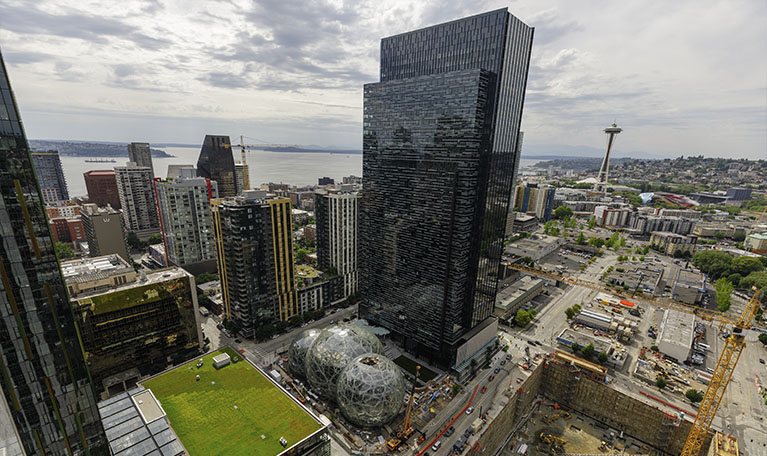
Core 4: Innovative invention machine
In the case of the Kindle, Amazon not only had the courage in 2004 to enter the most saturated and competitive electronics market, it did not shrink from the risk of cannibalization.
This threat was very real at the time. Amazon had achieved its first success by selling physical books online. If the Kindle could do what it promised, customers could easily find and download an e-book in sixty seconds, without the hassle of buying or carrying physical books. The extreme success of the Kindle could bankrupt all physical booksellers, including Amazon itself.
Daring to fail. Failure is a necessary and integral part of the invention. There are no shortcuts here. To pursue invention, tolerating failure is a must. Or, more accurately, the possibility of failure should be encouraged and embraced.
Amazon clearly understands this goal and, in fact, believes in failing early and iterating until it gets it right. Such a belief gives Amazon a distinct competitive advantage, and frees it to “pioneer the unexplored spaces.” As Bezos explained:
“One area where I think we have a special distinction is in failure. I believe we are the best place in the world to fail (we have a lot of practice!), and failure and invention are inseparable twins. To invent, you have to experiment, and if you know beforehand that it will work, it’s not an experiment.”
Among Amazon’s eighteen failures, the Fire Phone is undeniably a billion-dollar failure. However, from the ashes of the Fire Phone, Amazon was able to glean its learnings and leverage the expertise of its developers to accelerate the Echo and Alexa. These two proved to consist of victories that proved to be much larger in scale and very long in terms of time and timeline.

Foundation 5: High-speed, high-quality decisions
Bezos categorized all decisions as two types and established different profiles of decision-making processes depending on whether they were a type 1 or type 2 decision.
Type 1 decisions refer to those that are “consequential and irreversible or almost irreversible one-way doors… If you go in and don’t like what you see on the other side, you can’t go back to where you were before.”
Because of the long-term implications, Bezos suggested that type 1 decisions should go through a heavy process to ensure they are of good quality. “These decisions should be made methodically, carefully, slowly, with great deliberation and consultation.”
Type 2 decisions refer to those that are “changeable, reversible: they are two-way doors. If you have made an average type 2 decision, you don’t have to live with the consequences for so long. You can reopen the door and come back.
Fight herd thinking. Bezos recognizes so well the human weakness embedded in decision-making, subsequent biases, and misjudgments (regardless of how excellent the person is) that he places immense emphasis on fighting uniformity, challenging groupthink, and resisting the overrated importance of harmony.
At Amazon, team-minded people are not defined as “people who agree with the group consensus.” Instead, leaders are “required to respectfully challenge decisions when they disagree, even when doing so is uncomfortable or exhausting; they find no middle ground just for the sake of social cohesion.” People at Amazon tend to understand this obligation, not only to the company but also to the customer and the investor.
Consistent methodology. June 9, 2004, witnessed a brilliant innovation in human resource management practices. It all started with an email from Bezos: end of PowerPoint presentations from that point forward on the S-team (Amazon’s core executive team, including Bezos, and those reporting directly to him and two select executives two levels below). From that day forward, Amazon began a crusade against the division into topics, and embarked on a journey toward what would be known as “Six Page Narratives” (sometimes only two pages).
You may laugh at this idea, and seriously doubt the significance of this methodology, particularly in today’s age when PowerPoint has virtually become the second language of business. You are not alone. In some companies, there is a functional department whose sole job is to produce PowerPoint presentations.
As Bezos noted in a 2012 interview with Charlie Rose, “when you have to write your ideas in complete sentences and whole paragraphs, it forces a deeper clarity of thought.” That’s a big contrast to PowerPoint-style topics that give little information. “That’s easy for the presenter but difficult for the audience,” Bezos explained.
But Bezos was serious. This was not a whimsical extravagance, but a fully thought-out decision, particularly given the fact that the discussions and interactions required producing a high-quality six-page memo could take a week or more.
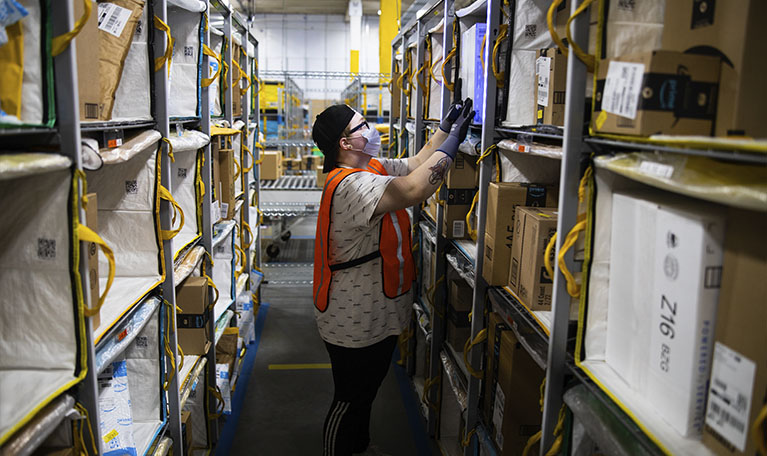
Foundation 6: Culture of Eternal Day 1
What kind of organization did Bezos want to build when he started a venture called Amazon?
If you carefully read all the letters to investors that Bezos has meticulously written over the past twenty-two years (1997-2018), the phrase “Day 1” has appeared surprisingly twenty-two times, with remarkable consistency. Over the past ten years, every letter to investors was ended with the same phrase:
“As always, I attach a copy of the original 1997 letter. Our approach remains the same, and we are still on Day 1.” (2009-2015, with a one-word deviation in 2014.)
“As always, I attach a copy of our original 1997 letter. We are still on Day 1.”
Customer obsession and Day 1 thinking are the twin-linked engines of the Amazon management system. Amazon has to continually improve in everything it does, and with increasing speed and agility.
To create an organization eternally on Day 1, you need a corresponding corporate culture that reinforces the continual growth of that quality. Once established, like it or not, culture tends to become so ingrained in an organization’s psyche, or so tied to the organization’s DNA, that it will be long, enduring, and very difficult to change. No one will deny the importance of the right culture. The real problem is how to define it and how to build it.
Amazon’s leadership principles have evolved over the years. As recently as 1998, Amazon had only five values: “obsession with the customer, frugality, bias to act, ownership, and high levels of demand for talent”; very different from traditional companies. Later, it added innovation. Today, Amazon uses a set of 14 leadership principles to define its corporate culture. This is defined by Amazon’s leadership team, not by Bezos alone.
- Customer obsession.
- Ownership.
- Invent and simplify.
- Be right, a lot.
- Learn and be curious.
- Hire and develop the best.
- Insist on the highest standards.
- Think big.
- Bias for action.
- Frugality.
- Gain confidence.
- Dive deep.
- Be firm; disagree and compromise.
- Deliver results.
With slight variations (invent and simplify instead of innovation, and hire and develop the best instead of the high bar for talent), the original values have been inherited and enriched.
At Amazon, the door desk is a symbol of lasting frugality. It reminds everyone of the early days when Bezos used doors for desks. The Door Desk Award rewards those who have had “a well-constructed idea that helps us deliver lower prices to customers,” and the award is a door desk ornament.
This has been the guiding star since Day 1 that consistently keeps Amazon designing a customer-obsessed business model (foundation 1), cultivating a continually increasing level of talent demand (foundation 2), building a system driven by AI-generated data and metrics (foundation 3), creating an innovative invention machine (foundation 4), and building a high-speed, high-quality decision-making mechanism (foundation 5).
This encourages, or in many ways, pushes people at Amazon to continually challenge the status quo for the better, to pursue new ideas endlessly, big and unique, to invent relentlessly, start over, do it again, and repeat again and again. No matter how small that initial seed is, an immortal Day 1 spirit will make it big. All these endeavors will, in response, reinforce the conviction of Day 1 culture.
As with everything else deliberately planned by Bezos, the Amazon management system is also a flywheel, a cycle, self-reinforcing.
FACTSHEET:
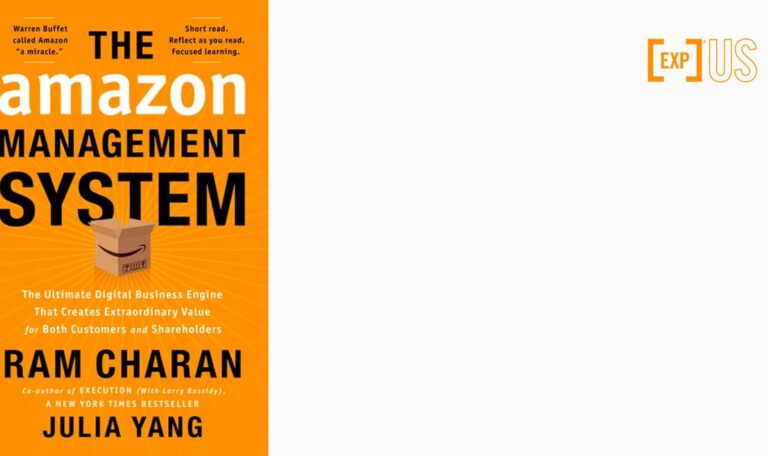
Original Title: The Amazon Management System
![[Experience Club] US [Experience Club] US](https://experienceclubus.com/wp-content/uploads/2021/03/laksdh.png)









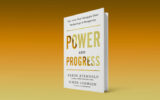
![[Experience Club] US [Experience Club] US](https://experienceclubus.com/wp-content/uploads/2021/03/logos_EXP_US-3.png)




